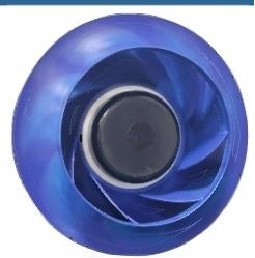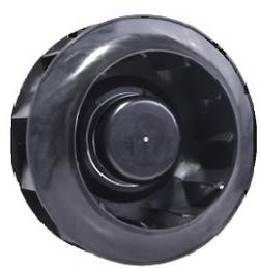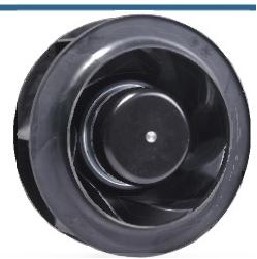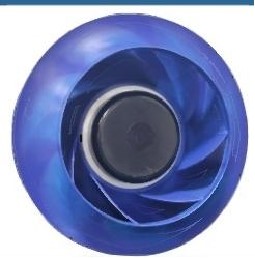Selecting the Ideal Fan for Low-Capacity Heat Recovery Systems: A Technical Guide for HRVs and Compact AHUs

Energy-efficient buildings—especially in Europe and North America—rely heavily on heat recovery systems to reduce heating and cooling load. Within these systems, the fan is the beating heart of airflow performance.
Choosing the correct fan architecture determines:
-
energy consumption
-
pressure stability
-
noise levels
-
installation footprint
-
long-term reliability
-
compliance with LEED, Passive House, and ErP regulations
AFL supports both engineering paths with specialized fan solutions designed for real-world ventilation performance.
Understanding Fan Architecture in Heat Recovery Ventilation
Low-capacity HRVs and compact AHUs typically operate within:
-
low to medium static pressure
-
continuous 24/7 duty cycles
-
strict acoustic limits
-
compact installation constraints
-
efficiency requirements driven by ErP, DOE, and local building codes
Two fan types dominate this segment:
-
Backward-curved fans (BC fans)
-
Forward-curved fans (FC fans)
Each delivers distinct advantages depending on airflow, pressure, and system layout.
Backward-Curved Fans: Efficiency for Medium-Resistance HRV & AHU Systems
Backward-curved impellers are engineered for high efficiency at medium static pressure, making them ideal for heat recovery systems designed around energy savings and airflow stability.
Aerodynamic Benefits
-
Higher peak efficiency due to optimized blade curvature
-
Strong performance across rising static pressure
-
Stable airflow curves that resist performance drop-off
-
Excellent compatibility with EC motors
-
Reduced turbulence for better acoustic control compared to similar power AC options
Best Applications
-
Medium-resistance HRVs
-
Compact AHUs with ducted distribution
-
Energy-efficient buildings targeting LEED / Passive House / BREEAM
-
Green-construction residential and commercial ventilation
-
Projects that require the best energy-to-airflow ratio
AFL Recommendation: B3P Backward-Curved Series
The AFL B3P backward-curved series is engineered for performance-critical systems:
-
high static pressure capability
-
optimized aerodynamic profile
-
higher efficiency at nominal flow
-
stable, low-energy operation
A strong choice for European and North American energy-focused ventilation systems.
Forward-Curved Fans: Compact & Quiet Operation for Residential and Light Commercial HRVs
Forward-curved blowers excel in:
-
compact installations
-
low to medium airflow
-
low-pressure ventilation
-
noise-sensitive environments
Their small-diameter blades and dense blade count deliver smooth airflow at extremely low noise.
Performance Advantages
-
High airflow output from a compact footprint
-
Very low operating noise
-
Ideal for housing-integrated HRVs where comfort is essential
-
Smooth, stable airflow with reduced vibration
-
Cost-effective solution for non-high-pressure systems
Best Applications
-
Residential HRVs
-
Small commercial ERV/HRV systems
-
Ductless or short-duct AHU systems
-
Apartments, hospitality, classrooms
-
Noise-priority environments
AFL Recommendation: F3P Forward-Curved Series
The AFL F3P series offers:
-
compact form factor
-
smooth airflow delivery
-
excellent low-noise performance
-
reliable operation for 24/7 ventilation
A proven choice for quiet residential and light commercial heat recovery applications.
Backward vs Forward Curved Fans:A Technical Comparison
| Feature | Backward-Curved (BC) | Forward-Curved (FC) |
|---|---|---|
| Efficiency | ⭐⭐⭐⭐☆ Higher | ⭐⭐⭐ Moderate |
| Static Pressure | ⭐⭐⭐⭐ Medium–High | ⭐⭐ Low–Medium |
| Footprint | Medium | ⭐⭐⭐⭐ Compact |
| Noise Level | Low | ⭐⭐⭐⭐ Very Low |
| Ideal Use | Green buildings, compact AHUs, ducted HRVs | Residential HRVs, light commercial ERVs |
| Best Pa Range | 150–350 Pa | 50–180 Pa |
| Green Certification Fit | ✔ LEED / Passive House | ✔ Low-noise residential |
| Motor Compatibility | Excellent for EC motors | Excellent for compact EC/AC |
How AFL Enables Better HRV & Compact AHU Design
AFL supports HRV and AHU manufacturers with engineering-grade solutions:
EC Motor Optimization
AFL’s EC motors increase efficiency by up to 30% compared to traditional AC fans.
Compact Mechanical Integration
Both B3P and F3P platforms are engineered for tight spaces.
Acoustic Engineering Support
We provide airflow modeling, CFD simulation, and fan–system matching to achieve optimal dB(A) output.
Application-Specific Guidance
Whether customers prioritize noise, footprint, or efficiency, AFL provides tailored recommendations—not generic products.
Conclusion
Choosing the right fan for a low-capacity HRV or compact AHU is about more than airflow—it’s about balancing:
-
energy efficiency
-
pressure requirements
-
acoustic comfort
-
installation limitations
-
long-term operating cost
Backward-curved and forward-curved designs each have their own strengths.
AFL doesn’t simply sell fans—we provide the right fan for your technical, architectural, and acoustic needs.
FAQ
1. Which fan is best for energy-efficient HRV systems?
Backward-curved fans generally deliver higher efficiency for medium-resistance systems.
2. Which fan is better for quiet residential HRVs?
Forward-curved fans provide the quietest operation and compact size.
3. Are EC fans necessary for HRV systems?
EC motors significantly improve energy efficiency—ideal for 24/7 ventilation.
4. Does AFL support engineering customization?
Yes. AFL provides airflow simulation, system optimization, and OEM customization.
-
FFU Air Filtration Technology for Advanced Cleanrooms: A Technical Whitepaper for Semiconductor, Biopharma, and High-Precision Manufacturing
2025-11-14
-
AFL EC External Rotor Fans — Redefining Airflow Engineering for the Smart Manufacturing Era
2025-11-14
-
What Makes EC Fans More Efficient? A Complete Guide to Next-Generation Electronically Commutated Fan Technology
2025-11-14
-
Dual-Inlet EC Centrifugal Fan — High-Volume, Low-Noise, Smart-Control Airflow for Next-Generation Systems
2025-11-14
-
Longer Service Life: Why DC Axial Fans Win in HVAC Innovation
2025-11-07
-
Backward Centrifugal Fan Innovation for Ventilation Systems Efficiency
2025-11-14
-
PC Cooling Innovation: The DC Brushless PWM FG 8015 Fan Advantage
2025-10-31
-
Customer Success Story — High-Efficiency Fan for FFU Cleanroom Applications
2025-10-24
-
The New EU ErP Directive — Redefining Energy Efficiency and Fan Technology for the Future
2025-10-24
-

AFL External Rotor Fans Axial Fans in Fan Solutions for the Renewable Energy Industry
-

DC Backward Centrifugal Fans - AFL Fans Premium Solution for Industrial Ventilation
-

DC Backward Centrifugal Fans φ250 – High-Performance Industrial Fans
-

High-Quality DC Backward Curved Centrifugal Fans φ220 for Industrial Applications | Trusted Supplier in China
-

DC Backward Centrifugal Fans φ225 for Industrial and Commercial Use


